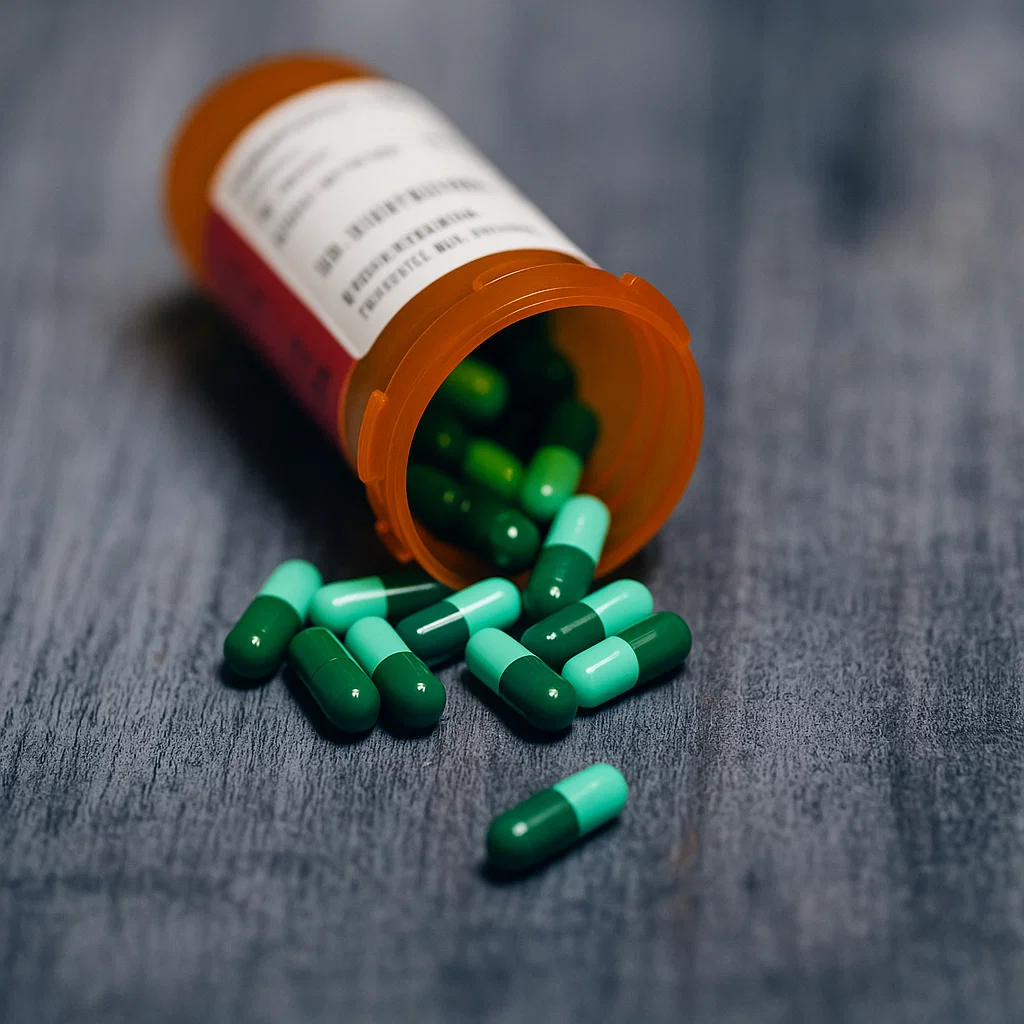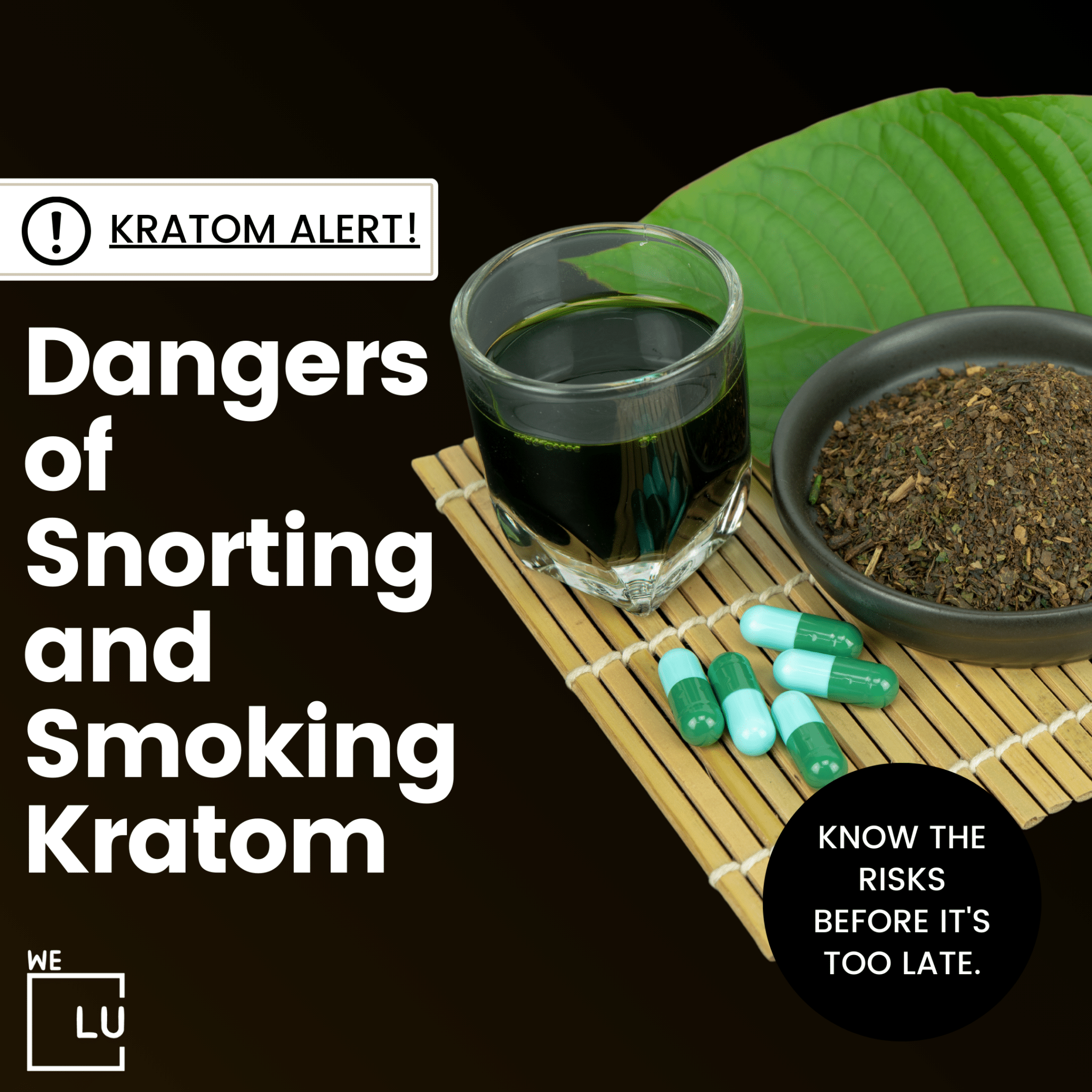How Long Does Oxycodone Stay In Your Body?
How long does Oxycodone stay in your system? The duration that oxycodone stays in your body can vary depending on several factors, including individual metabolism, liver function, and the specific formulation of the drug. Oxycodone is a potent opioid analgesic commonly used to manage pain. The immediate-release form of oxycodone usually has a half-life of around 3 to 4.5 hours, meaning it takes that amount of time for half of the drug to be eliminated from the body.
However, it may take several half-lives for a drug to be completely cleared from the body. As a general rule of thumb, it can take about 5 half-lives for a drug to be considered eliminated. Therefore, oxycodone may be detectable in the body for approximately 15-22.5 hours after the last dose.
Oxycodone can be detected in drug tests, such as urine tests, for a certain period after use. The detection window can vary, but it’s generally within a few days to a week after the last dose.
Always follow your healthcare provider’s instructions regarding the use of oxycodone or any other prescription medication, and do not alter your dosage or stop taking the medication without consulting your healthcare professional. If you have concerns about oxycodone use or its potential effects, it’s advisable to discuss them with your healthcare provider.
Oxycodone Drug Test
The most common types of drug tests that can detect oxycodone include urine tests, blood tests, saliva tests, and hair follicle tests. The choice of test depends on factors such as the purpose of the test, the detection window required, and the ease of sample collection.
- Urine Test: This is the most common method for detecting oxycodone. It’s often used in workplace drug screenings. Oxycodone is usually detectable in urine for about 3-4 days after the last use, but this can vary depending on factors like metabolism, frequency of use, and the specific test used.
- Blood Test: Oxycodone is generally detectable in the blood for a shorter period than urine. It can usually be detected for up to 24 hours after use. Blood tests are less standard for routine drug screenings due to the invasive nature of the sample collection.
- Saliva Test: Saliva tests are less common for opioids, but they can detect oxycodone within a shorter timeframe than urine tests. Oxycodone may be detectable in saliva for 1-4 days after use.
- Hair Follicle Test: Hair follicle tests have a longer detection window than other tests but are less commonly used. Oxycodone can be detected in hair for up to 90 days or even longer after use.
Drug tests are designed to detect the presence of oxycodone and its metabolites, and they do not differentiate between prescribed use and illicit use. If you are prescribed oxycodone and need to undergo a drug test, inform the testing facility about your prescription and provide relevant documentation to avoid any potential issues.
Always follow your healthcare provider’s instructions regarding medication use and consult with them if you have concerns about drug tests or the potential for detection of prescribed medications.
How Long Does Oxycodone Stay In Your Urine?
Oxycodone is typically detectable in urine for about 3 to 4 days after the last use. In some cases, it might be detected for up to a week, especially in individuals with slower metabolism or those who have been using the drug for an extended period.
How Long Does Oxycodone Stay In Your Blood?
Oxycodone is typically detectable in blood for up to 24 hours after the last use. Blood tests are less common for routine drug screenings than urine tests, primarily due to the shorter detection window. Blood tests are more invasive and can be impractical for detecting drug use beyond a very recent timeframe.
How Long Does Oxycodone Stay In Your Saliva?
Oxycodone may be detectable in saliva for about 1 to 4 days after the last use. Saliva tests are less common for opioids compared to urine tests but are used for more immediate detection. They are non-invasive and can provide a relatively recent snapshot of drug use. However, the detection window is shorter compared to urine tests.
How Long Does Oxycodone Stay In Your Hair?
Hair follicle tests have a longer detection window than urine, blood, or saliva tests. As a general guideline, Oxycodone can be detectable in hair for up to 90 days or even longer.
Hair follicle tests are less commonly used for routine drug screenings due to the longer detection window and the potential for false positives. However, they are capable of detecting a historical pattern of drug use over an extended period.
How Long Does Oxycodone Stay In Your System Table
| Drug Test Type | Detection Window for Oxycodone |
|---|---|
| Urine Test | 3-4 days, up to a week in some cases |
| Blood Test | Up to 24 hours |
| Saliva Test | 1-4 days |
| Hair Follicle Test | Up to 90 days or longer |
How long does Oxycodone stay in urine, blood, saliva, and hair.

Skip To:
Learn More:
- Oxycodone Vs Oxycontin. What Is The Difference And Similarities?
- Oxycodone and Hydrocodone, Side Effects, Forms, Dosages, Differences & Interactions
- How long do opiates stay in your system? Specifics, Addiction, Drug Processing & Treatment
- Opiate Withdrawal, Effects, Causes, Symptoms, Diagnosis, Complications, Detox & Treatments

Get Your Life Back
Find Hope & Recovery. Get Safe Comfortable Detox, Addiction Rehab & Dual Diagnosis High-Quality Care.
Hotline (855) 695-1160
Oxycodone Half-Life
The half-life of a drug refers to the time it takes for half of the drug to be eliminated from the body. The half-life of oxycodone can vary based on factors such as the specific formulation of the drug and individual differences in metabolism.
For immediate-release oxycodone, the half-life is generally in the range of 3 to 4.5 hours. This means that, on average, it takes about 3 to 4.5 hours for half of the administered dose of immediate-release oxycodone to be cleared from the body.
The half-life may be longer for extended-release formulations, often in the 4 to 6 hours or more range. Extended-release formulations are designed to provide a more gradual release of the medication over an extended period.
It’s important to note that while the half-life estimates the time it takes for the drug concentration in the blood to decrease by half, it may take several half-lives for a drug to be effectively cleared from the body. Factors such as liver function, kidney function, and individual variations in metabolism can also influence the elimination of oxycodone.
What Factors Affect How Long Oxycodone Shows Up on a Drug Test?
Several factors can influence how long oxycodone is detectable on a drug test. The key factors include:
- Metabolism: Individual variations in metabolism can significantly impact how quickly the body processes and eliminates oxycodone. People with faster metabolism may clear the drug more rapidly than those with slower metabolism.
- Frequency and Duration of Use: Chronic or long-term use of oxycodone can lead to its accumulation in the body, extending the time it takes for the drug to be eliminated.
- Dosage and Formulation: The specific formulation of oxycodone can affect its detection time. Extended-release formulations may have a longer duration of action and may take longer to be eliminated than immediate-release formulations.
- Individual Health Factors: An individual’s overall health, including liver and kidney function, can influence the metabolism and elimination of oxycodone.
- Hydration Level: Adequate hydration can help eliminate drugs from the body. Dehydration may slow down the excretion of oxycodone.
- Age: Metabolism tends to slow down with age, so older individuals may eliminate oxycodone more slowly than younger individuals.
- Genetics: Genetic factors can play a role in how individuals metabolize drugs, including oxycodone.
- Interactions with Other Medications: Interactions with other medications can affect the metabolism of oxycodone, potentially prolonging or shortening its detection time.
- Urinary pH: The urine’s pH can influence drug excretion. Changes in urinary pH can impact the solubility of oxycodone and affect its elimination.
- Body Mass and Composition: The distribution of fat and lean body mass can impact how drugs are stored and eliminated in the body.
Drug tests can detect the presence of oxycodone and its metabolites, but they do not differentiate between prescribed use and illicit use. If you are prescribed oxycodone and need to undergo a drug test, informing the testing facility about your prescription and providing relevant documentation is crucial to avoid potential issues.
Always follow your healthcare provider’s instructions regarding the use of oxycodone or any other prescription medication, and consult with them if you have concerns about drug tests or the detection of prescribed medications.
Get Help. Get Better. Get Your Life Back.
Searching for an Accredited Drug and Alcohol Rehab Centers in Near You?
Even if you have failed previously and relapsed, or are in the middle of a difficult crisis, we stand ready to support you. Our trusted behavioral health specialists will not give up on you. When you feel ready or just want someone to speak to about therapy alternatives to change your life call us. Even if we cannot assist you, we will lead you to wherever you can get support. There is no obligation. Call our hotline today.
FREE Addiction Hotline – Call 24/7What Is Oxycodone?
Oxycodone is a potent opioid analgesic, meaning it is a type of medication used for pain relief. It is derived from the opium poppy plant and is classified as a semi-synthetic opioid. Oxycodone is commonly prescribed to manage moderate to severe pain, especially when other pain medications are not sufficient.
Some key points about oxycodone include:
- Pain Relief: Oxycodone is primarily used to alleviate pain. It is often prescribed for conditions such as post-surgical pain, injury-related pain, and certain chronic pain conditions.
- Formulations: Oxycodone comes in various formulations, including immediate-release and extended-release (also known as controlled-release) versions. Immediate-release formulations provide quick pain relief, while extended-release formulations are designed to provide a more gradual and sustained effect over an extended period.
- Brand Names: Oxycodone is available under various brand names, including OxyContin, Roxicodone, and Percocet. The combination medication Percocet contains both oxycodone and acetaminophen.
- Risk of Dependence and Addiction: Like other opioids, oxycodone carries a risk of dependence and addiction, especially when misused or for an extended period. Individuals need to take oxycodone only as prescribed by a healthcare professional.
- Side Effects: Common side effects of oxycodone can include drowsiness, dizziness, constipation, and nausea. Serious side effects can occur, especially if the medication is misused or taken in high doses.
- Prescription Medication: Oxycodone is a prescription medication, and it should only be used under the supervision of a qualified healthcare provider. Patients should follow their healthcare provider’s instructions carefully and promptly report any concerns or side effects.
- Abuse and Misuse Concerns: Due to its opioid nature, oxycodone is sometimes misused or abused. It can be habit-forming, and using it in ways other than prescribed can lead to serious health consequences, including overdose.
Given the potential for misuse and the risk of side effects, it’s crucial for individuals prescribed oxycodone to communicate openly with their healthcare provider, report any concerns or side effects, and use the medication as directed.

Comfortable Facilities & Amenities
High-Quality Addiction & Mental Health Rehabilitation Treatment
Rehab Centers TourRenowned California Addiction Center. Serene Private Facilities. Inpatient rehab programs vary.
Addiction Helpline (855) 695-1160Proven recovery success experience, backed by a Team w/ History of:
15+
Years of Unified Experience
100s
5-Star Reviews Across Our Centers
10K
Recovery Success Stories Across Our Network
- Low Patient to Therapist Ratio
- Onsite Medical Detox Center
- Comprehensive Dual-Diagnosis Treatment
- Complimentary Family & Alumni Programs
- Coaching, Recovery & Personal Development Events

Side Effects Of Oxycodone
Oxycodone, like other opioids, can have various side effects, ranging from common and mild to more severe. It’s important to note that individuals may react differently to medications, and not everyone will experience the same side effects. Common side effects of oxycodone include:
- Drowsiness: Oxycodone can cause drowsiness or sedation, affecting a person’s ability to concentrate or operate machinery.
- Dizziness: Some individuals may experience dizziness, especially when standing up quickly. This can increase the risk of falls.
- Nausea and Vomiting: Oxycodone use may lead to nausea and, in some cases, vomiting.
- Constipation: Opioids, including oxycodone, commonly cause constipation. Increasing fluid intake, dietary fiber, and physical activity can help alleviate this side effect.
- Itching: Itchiness or skin rash may occur as a side effect of oxycodone.
- Dry Mouth: Opioids can cause a dry mouth, which may contribute to dental issues. Maintaining good oral hygiene and staying hydrated can help.
- Sweating: Some individuals may experience increased sweating as a side effect.
- Difficulty Breathing: In rare cases, oxycodone can cause respiratory depression, especially at higher doses. This is a serious side effect that requires immediate medical attention.
- Mood Changes: Opioids can affect mood, leading to symptoms like anxiety or mood swings.
- Urinary Retention: Opioids may cause difficulty in urination or urinary retention.
Be aware of the more severe side effects that Oxycodone has that may require prompt medical attention. These can include:
- Signs of Allergic Reaction: Such as rash, itching, swelling, severe dizziness, or difficulty breathing.
- Signs of Overdose: Include slowed or shallow breathing, extreme drowsiness, confusion, or loss of consciousness.
- Severe Constipation: If constipation becomes severe or is accompanied by abdominal pain and bloating.
- Mental/Mood Changes: Such as agitation, confusion, hallucinations, or thoughts of suicide.
Make sure to take oxycodone only as prescribed by a healthcare professional, to report any side effects promptly, and to seek medical attention if there are concerns about serious side effects or overdose. Additionally, individuals prescribed oxycodone should discuss their medical history and any potential interactions with other medications with their healthcare provider.
This information is not exhaustive, and individual responses to medications can vary. Always consult a healthcare professional for personalized advice and guidance based on your health condition.
World-class, Accredited, 5-Star Reviewed, Effective Addiction & Mental Health Programs. Complete Behavioral Health Inpatient Rehab, Detox plus Co-occuring Disorders Therapy.
CALL (855) 695-1160End the Addiction Pain. End the Emotional Rollercoaster. Get Your Life Back. Start Drug, Alcohol & Dual Diagnosis Mental Health Treatment Now. Get Free No-obligation Guidance by Substance Abuse Specialists Who Understand Addiction & Mental Health Recovery & Know How to Help.
Oxycodone Addiction
Oxycodone, like other opioids, has the potential for addiction, dependence, and misuse. Opioid addiction is a serious medical condition that can have profound effects on a person’s physical and mental health. Here are some key points about oxycodone addiction:
- Addictive Nature: Oxycodone is a potent opioid, and its use can lead to physical and psychological dependence. Continued use, especially when not medically necessary or as prescribed, increases the risk of addiction.
- Physical Dependence: With regular use of oxycodone, the body can develop a tolerance, requiring higher doses to achieve the same pain-relieving effects. Physical dependence can also lead to withdrawal symptoms when the drug is not taken, which can contribute to the cycle of misuse.
- Risk Factors: Individuals with a history of substance abuse, mental health disorders, or a family history of addiction may be at a higher risk of developing oxycodone addiction. Additionally, using opioids in ways other than prescribed, such as taking higher doses or crushing and snorting the medication, increases the risk of addiction.
- Misuse and Abuse: Using oxycodone in ways other than prescribed, such as taking higher doses or using it recreationally, significantly increases the risk of addiction and other health complications.
- Overdose Risk: Misuse of oxycodone can lead to overdose, which can be life-threatening. Symptoms of overdose may include extreme drowsiness, slowed or stopped breathing, and loss of consciousness.
- Withdrawal: Withdrawal symptoms can occur when a person dependent on oxycodone abruptly stops or reduces the dose. Withdrawal symptoms may include anxiety, restlessness, sweating, nausea, vomiting, diarrhea, and muscle aches.
- Treatment Options: Treatment for oxycodone addiction often involves a combination of medical, behavioral, and psychosocial interventions. This may include medication-assisted treatment (MAT), counseling, therapy, and support groups.
- Prevention: To reduce the risk of addiction, it’s crucial to take oxycodone only as prescribed by a healthcare professional. Informing your healthcare provider about any personal or family history of substance abuse and seeking alternative pain management strategies when appropriate are important preventive measures.
If you or someone you know is struggling with oxycodone addiction, it’s essential to seek help from a healthcare professional or addiction specialist. Addiction is a treatable condition, and early intervention can improve outcomes.
Remember that the information provided here is for general knowledge, and individual cases may vary. Always consult a healthcare professional for personalized advice and guidance based on specific circumstances.
Experience Transformative Recovery at the We Level Up California Treatment Center.
See our authentic success stories. Get inspired. Get the help you deserve.



Start a New Life
Begin with a free call to an addiction & behavioral health treatment advisor. Learn more about our dual-diagnosis programs. The We Level Up treatment center network delivers recovery programs that vary by each treatment facility. Call to learn more.
- Personalized Care
- Caring Accountable Staff
- World-class Amenities
- Licensed & Accredited
- Renowned w/ 100s 5-Star Reviews
We’ll Call You
How Long Do Opiates Stay in Your System? How Long Do Opiates Stay in Urine, Blood, & Body?
Search We Level Up CA How Long Does Oxycodone Stay In Your System Drug & Alcohol Rehab / Detox & Mental Health Topics & Resources
Sources
- MedLine Plus – Opioid Testing – https://medlineplus.gov/lab-tests/opioid-testing/ Related: How Long Does Oxycodone Stay In Your system, How Long Does Oxycodone Stay In Urine, How Long Does Oxycodone Stay In Your Urine, Oxycodone Drug Test, How Long Does Oxycodone Stay In Your Blood, How Long Does Oxycodone Stay In The System, How Long Does Oxycodone Stay In Your Body, Oxycodone In Urine Test, Oxycodone Urine Test, Urine Test For Oxycodone, Urine Test Oxycodone,
- US Equal Employment Opportunity Commission (EEOC) – Use of Codeine, Oxycodone, and Other Opioids: Information for Employees – https://www.eeoc.gov/laws/guidance/use-codeine-oxycodone-and-other-opioids-information-employees Related: How Long Does Oxycodone Stay In Your system, How Long Does Oxycodone Stay In Urine, How Long Does Oxycodone Stay In Your Urine, Oxycodone Drug Test, How Long Does Oxycodone Stay In Your Blood, How Long Does Oxycodone Stay In The System, How Long Does Oxycodone Stay In Your Body, Oxycodone In Urine Test, Oxycodone Urine Test, Urine Test For Oxycodone, Urine Test Oxycodone,
- Hadland SE, Levy S. Objective Testing: Urine and Other Drug Tests. Child Adolesc Psychiatr Clin N Am. 2016 Jul;25(3):549-65. doi: 10.1016/j.chc.2016.02.005. Epub 2016 Mar 30. PMID: 27338974; PMCID: PMC4920965. https://www.ncbi.nlm.nih.gov/pmc/articles/PMC4920965/ Related: How Long Does Oxycodone Stay In Your system, How Long Does Oxycodone Stay In Urine, How Long Does Oxycodone Stay In Your Urine, Oxycodone Drug Test, How Long Does Oxycodone Stay In Your Blood, How Long Does Oxycodone Stay In The System, How Long Does Oxycodone Stay In Your Body, Oxycodone In Urine Test, Oxycodone Urine Test, Urine Test For Oxycodone, Urine Test Oxycodone,
- Drug Enforcement Administration. “Oxycodone.” April 2020.
- DEA – Oxycodone – https://www.dea.gov/factsheets/oxycodone
- MedLine Plus – Oxycodone – https://medlineplus.gov/druginfo/meds/a682132.html
- FDA – Oxycontin Label – https://www.accessdata.fda.gov/drugsatfda_docs/label/2008/020553s059lbl.pdf
- Opioid addiction – U.S. National Library of Medicine (medlineplus.gov)
- Sadiq NM, Dice TJ, Mead T. Oxycodone. In: StatPearls [Internet]. Treasure Island (FL): StatPearls Publishing; 2023 Jan-. Available from: https://www.ncbi.nlm.nih.gov/books/NBK482226/
- Cohen B, Ruth LJ, Preuss CV. Opioid Analgesics. [Updated 2023 Apr 29]. In: StatPearls [Internet]. Treasure Island (FL): StatPearls Publishing; 2023 Jan-. Available from: https://www.ncbi.nlm.nih.gov/books/NBK459161/
- Chou R, Hartung D, Turner J, et al. Opioid Treatments for Chronic Pain [Internet]. Rockville (MD): Agency for Healthcare Research and Quality (US); 2020 Apr. (Comparative Effectiveness Review, No. 229.) Available from: https://www.ncbi.nlm.nih.gov/books/NBK556253/
- National Academies of Sciences, Engineering, and Medicine; Health and Medicine Division; Board on Health Sciences Policy; Committee on Pain Management and Regulatory Strategies to Address Prescription Opioid Abuse; Phillips JK, Ford MA, Bonnie RJ, editors. Pain Management and the Opioid Epidemic: Balancing Societal and Individual Benefits and Risks of Prescription Opioid Use. Washington (DC): National Academies Press (US); 2017 Jul 13. Available from: https://www.ncbi.nlm.nih.gov/books/NBK458660/ doi: 10.17226/24781
- Zullo AR, Danko KJ, Moyo P, et al. Prevention, Diagnosis, and Management of Opioids, Opioid Misuse, and Opioid Use Disorder in Older Adults [Internet]. Rockville (MD): Agency for Healthcare Research and Quality (US); 2020 Nov. (Technical Brief, No. 37.) Available from: https://www.ncbi.nlm.nih.gov/books/NBK564144/




